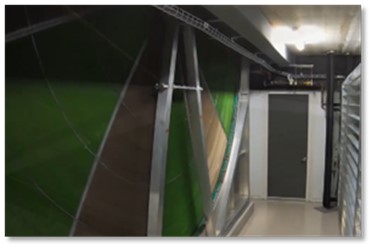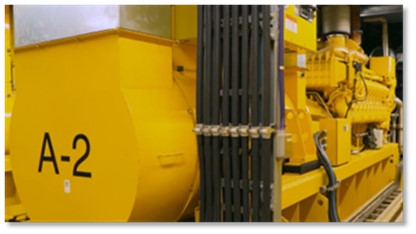Enterprise data centres
Enterprise data centres (EDC) are modern, reliable and secure facilities that serve the entire federal government.
Shared Services Canada (SSC) has established 4 enterprise data centres that host data and applications used to enable the delivery of digital services to Canadians:
- EDC Barrie
- EDC Borden
- EDC Gatineau
- EDC Montréal
EDCs are a key component of the hybrid hosting model that supports the Government of Canada’s 2024 Application Hosting Strategy.
Secure and reliable
Access to, as well as inside, each EDC is tightly controlled to keep the important data it houses safe.
Physical security controls use modern technologies to ensure only authorized employees can enter.
Only a small number of security-cleared, skilled employees have access to each facility. This contributes to the security and reliability of each EDC by lowering the risk of human error.
Employees use sensors to carefully monitor equipment and devices remotely to ensure they are running smoothly.
These facilities were designed to suppress fire and withstand natural disaster. If needed, they can switch to an alternate mechanical or electrical system with no impact to IT services. This means that all maintenance can be done without any service disruption.
To safeguard against failure, each EDC also has at least 2 different paths to connect it to outside networks.
All of SSC’s EDCs meet or exceed strict industry standards for availability and reliability. For instance, EDC Borden received Tier III Gold certification from the Uptime Institute, a global data centre standards organization, for exceptional operation and maintenance standards.
SSC’s EDCs protect services critical to Canadians—so if something fails, they lose redundancy, not service.
Reducing environmental impact
The equipment inside each EDC generates significant heat. SSC’s EDCs use innovative technologies to reduce their environmental impact, including managing that heat.

A cooling wheel used inside an EDC.
Two of the 4 EDCs use large cooling wheels to exchange cold air from outdoors with the hot air inside, taking advantage of Canada’s climate to save energy. For 8 to 10 months a year, no extra heat or air conditioning is needed.
Another innovative technology in one of our EDCs is a flywheel emergency power system. It uses a constantly rotating wheel designed to store energy created by the rotation. That stored energy helps keep equipment running during power outages without relying on costly and environmentally damaging batteries.
To learn more, watch Enterprise data centres: How technology reduces their environmental impact (YouTube).

An uninterruptible power supply system that uses flywheel technology.
All of SSC’s EDCs use captured rainwater for their building system needs, reducing the load on water treatment facilities. In one of our parking lots, we collect the water that has seeped through the gravel surface and use it for other purposes, such as landscaping. It’s an environmentally friendly alterative to a paved surface.
These are just some of the reasons why our enterprise data centres have all met a minimum LEED® Silver rating. LEED is a global green building certification program recognizing leadership in environmentally sustainable design.
Moving data to EDCs
Since 2012, the Government of Canada has been migrating even more applications and data to SSC’s EDCs.
We successfully closed over 500 older and less reliable data centres, saving millions of dollars and improving services to Canadians.
We continue to move existing applications to our EDCs and house new ones there to ensure highly available, green, secure and reliable hosting environments to serve Canadians.
Related links
Page details
- Date modified: